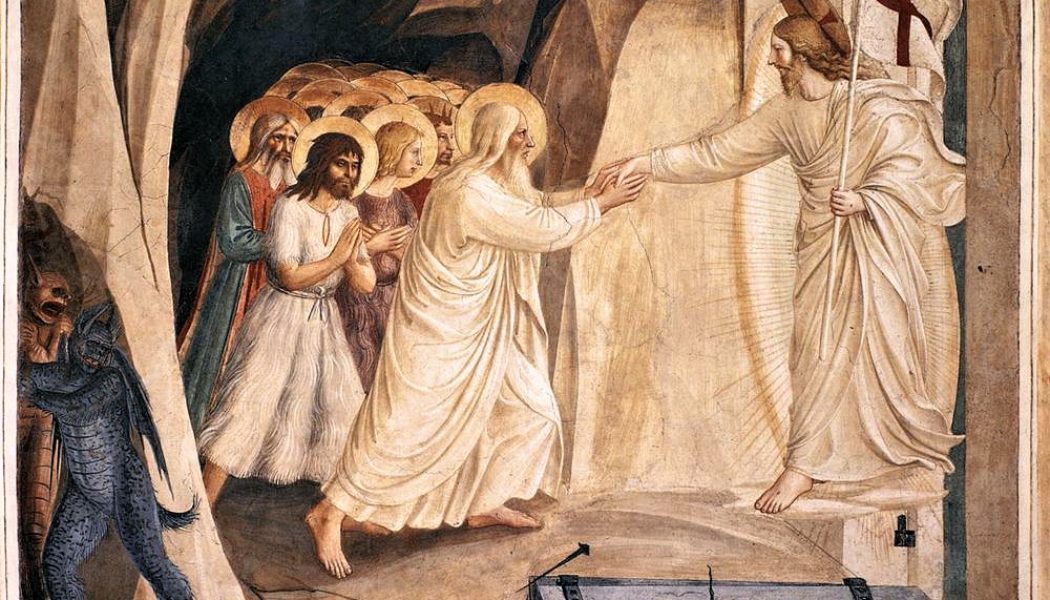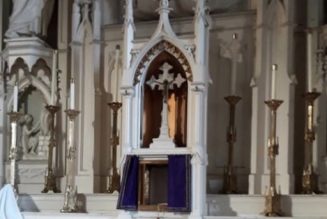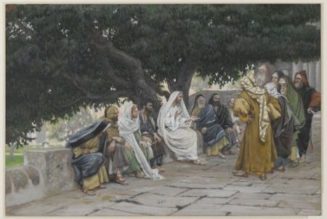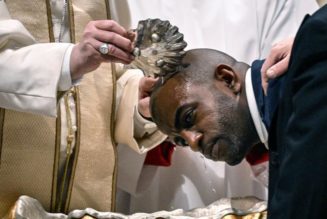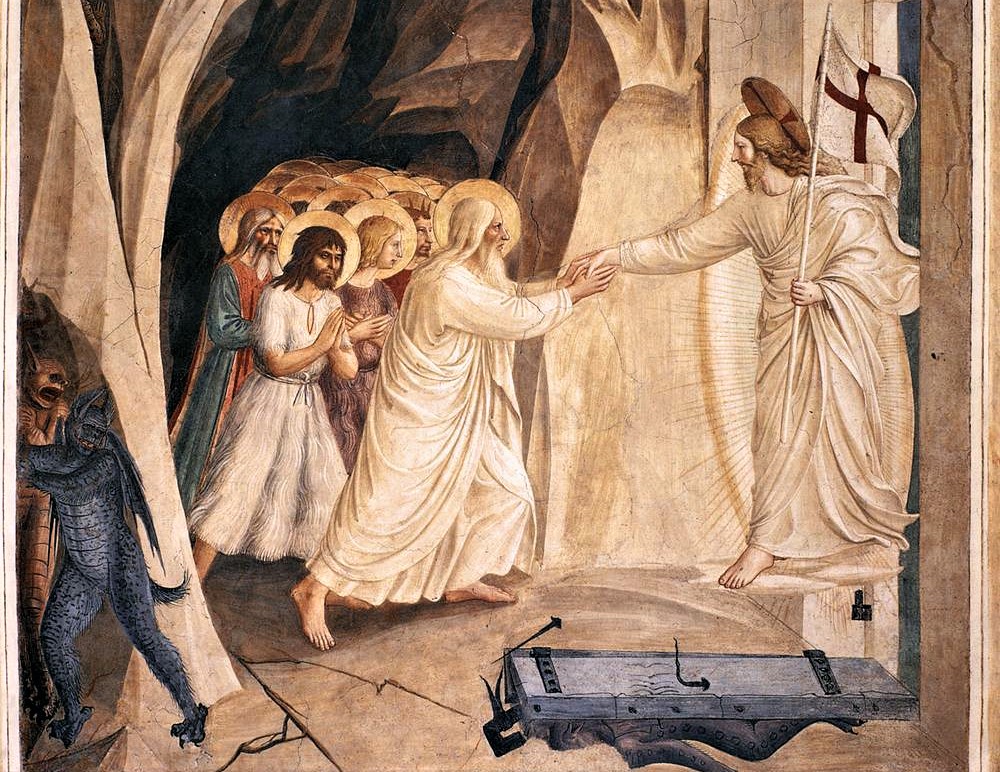
Where is Christ after He dies on Friday afternoon and before He rises on Easter Sunday? Both Scripture and Tradition answer this question. Consider the following excerpt from a second century sermon as well as this meditation from the Catechism of the Catholic Church.
Ancient Homily for Holy Saturday (ca. 2nd century A.D.):
Today a great silence reigns on earth, a great silence and a great stillness. A great silence because the King is asleep. The earth trembled and is still because God has fallen asleep in the flesh and he has raised up all who have slept ever since the world began. … He has gone to search for Adam, our first father, as for a lost sheep. Greatly desiring to visit those who live in darkness and in the shadow of death, he has gone to free from sorrow Adam in his bonds and Eve, captive with him—He who is both their God and the son of Eve. … “I am your God, who for your sake have become your Son. … I order you, O sleeper, to awake. I did not create you to be a prisoner in hell. Rise from the dead, for I am the life of the dead.”
Nothing could be more beautiful than that line addressed to Adam and Eve: “I am your God, who for your sake have become your Son.”
St Ephrem the Deacon also attests to this descent among the dead and describes it rather colorfully:
Death could not devour our Lord unless he possessed a body, neither could hell swallow him up unless he bore our flesh; and so he came in search of a chariot in which to ride to the underworld. This chariot was the body which he received from the Virgin; in it he invaded death’s fortress, broke open its strongroom and scattered all its treasure. (Sermo de Domino nostro, 3-4. 9: Opera edit. Lamy, 1, 152-158. 166-168)
Scripture also testifies to Christ’s descent to the dead and what He did: For Christ also suffered once for sins, the righteous for the unrighteous, that he might bring us to God, being put to death in the flesh but made alive in the spirit, in which he went and proclaimed to the spirits in prison. … For this is why the gospel was preached even to those who are dead, that though judged in the flesh the way people are, they might live in the spirit the way God does (1 Peter 3:18; 1 Peter 4:6).
The Catechism of the Catholic Church on Christ’s descent to the dead (excerpts from CCC # 632-635):
[The] first meaning given in the apostolic preaching to Christ’s descent into hell [is] that Jesus, like all men, experienced death and in his soul joined the others in the realm of the dead.
But he descended there as Savior, proclaiming the Good News to the spirits imprisoned there [cf. 1 Pet 3:18-19]. Scripture calls the abode of the dead, to which the dead Christ went down, “hell”—Sheol in Hebrew, or Hades in Greek—because those who are there are deprived of the vision of God [cf. Phil 2:10; Acts 2:24; Rev 1:18; Eph 4:9; Pss 6:6; 88:11-13].
Such is the case for all the dead, whether evil or righteous, while they await the Redeemer [cf. Ps 89:49; 1 Sam 28:19; Ezek 32:17-32; Luke 16:22-26]. “It is precisely these holy souls, who awaited their Savior … whom Christ the Lord delivered when he descended into hell” [Roman Catechism I, 6, 3].
Jesus did not descend into hell to deliver the damned, nor to destroy the hell of damnation, but to free the just who had gone before him.
[So] the gospel was preached even to the dead. The descent into hell brings the Gospel message of salvation to complete fulfillment. This is the last phase of Jesus’ messianic mission, a phase which is condensed in time but vast in its real significance: the spread of Christ’s redemptive work to all men of all times and all places, for all who are saved have been made sharers in the redemption.
Christ went down into the depths of death so that “the dead will hear the voice of the Son of God, and those who hear will live” [1 Peter 4:6]. Jesus, “the Author of life”, by dying, destroyed “him who has the power of death, that is, the devil, and [delivered] all those who through fear of death were subject to lifelong bondage” [Heb 2:14-15; cf. Acts 3:15].
Henceforth the risen Christ holds “the keys of Death and Hades”, so that “at the name of Jesus every knee should bow, in heaven and on earth and under the earth” [Rev 1:18; Phil 2:10].
Here is a recording of a sermon I preached on this topic: Where is Jesus Now.
Cross-posted at the Catholic Standard: Where Is Jesus Between His Death and Resurrection?
Join Our Telegram Group : Salvation & Prosperity
